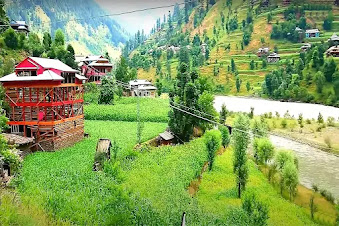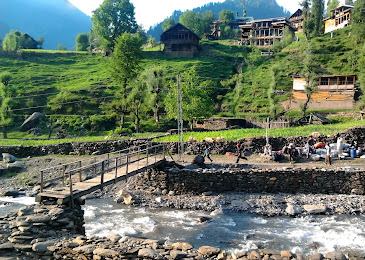Introduction
Azad Kashmir, meaning "Free Kashmir," is a region of extraordinary natural beauty and cultural diversity nestled in the northwestern part of the Indian subcontinent. This autonomous territory, often referred to as Pakistan-administered Kashmir, boasts breathtaking landscapes, a rich history, and a unique blend of cultures. From its majestic mountains to its serene lakes and vibrant communities, Azad Kashmir offers a captivating experience that transcends geographical boundaries.
1- Spectacular Landscapes
Azad Kashmir is a paradise for nature enthusiasts and adventure seekers. The region is dominated by the mighty Himalayas, including the renowned Karakorum Range and the lesser-known Pr Panjal Range. Nanga Parbat, the ninth-highest peak in the world, stands proudly within its borders, attracting mountaineers from across the globe.
The Neelum Valley, often referred to as the "Blue Gem of Pakistan," is one of Azad Kashmir's most enchanting regions. Lush green valleys, meandering rivers, and charming villages are a feast for the eyes. The Ratti Gali Lake, surrounded by snow-capped peaks, adds to the mystical aura of the region.
2- Cultural Kaleidoscope
Azad Kashmir is a melting pot of cultures and traditions, with influences from various ethnic groups and historical eras. The region's population includes a mix of Kashmirs, Punjabi, Parrish, and more. This diversity is reflected in its languages, music, and arts.
The vibrant local culture finds expression in various forms of traditional music and dance. The rhythm of the dhol (drum) and the melodies of traditional instruments accompany intricate folk dances that tell stories of love, harvest, and life in the mountains.
3- Historical Significance
The history of Azad Kashmir is closely intertwined with the broader Kashmir conflict. Following the partition of India in 1947, the princely state of Jam mu and Kashmir became a contentious issue between India and Pakistan. Azad Kashmir was established in 1947 with the aim of representing the aspirations of the local population for self-determination. The unresolved Kashmir dispute continues to shape regional dynamics and politics.
4- Tourism Potential
While Azad Kashmir's natural beauty is its primary allure, efforts are being made to promote sustainable tourism in the region. The development of infrastructure, Eco-friendly accommodations, and adventure tourism opportunities has been on the rise. Treks, mountain climbing, and water sports are gaining popularity among both domestic and international tourists.
5- Challenges and Conservation
Despite its breathtaking beauty, Azad Kashmir faces challenges such as inadequate infrastructure, political instability, and environmental concerns. Ensuring responsible tourism practices and preserving the delicate ecosystems of the region are vital for its long-term sustainability.
Conclusion
Azad Kashmir is a land of unparalleled beauty, history, and culture. Its majestic landscapes, diverse communities, and vibrant traditions make it a destination worth exploring. As efforts continue to enhance infrastructure and promote responsible tourism, Azad Kashmir has the potential to become a prime example of how a region's natural and cultural heritage can be preserved while providing economic opportunities for its inhabitants.





.webp)
Comments
Post a Comment